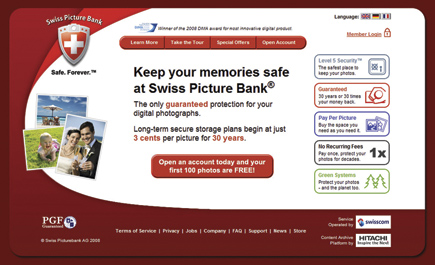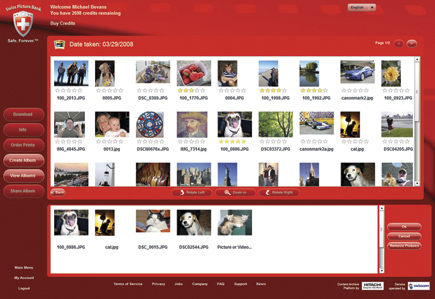Online Storage; You Might Need It, But Take Care—It Can Bite You!
You don’t need a back-up drive, you need a back-up plan. Backing up image data is an attitude, not an accessory. I preach the Three Rs of File Safety; to be effective, your back-up storage solution must be Regular, Reliable, and Redundant.
 |
|
 |
|
|
High-capacity external hard drives cost less than a steak dinner these days. And you can buy a name brand 4x Blu-ray Disc writer for under $200. Desktop back-up solutions are inexpensive and abundantly available—and should be part of every prudent back-up system. But it’s dangerous to rely on these technologies alone. Even if you’ve gone whole hog and installed a RAID array on your main PC you are not 100 percent safe—what if a lightening bolt strikes through your roof and fries the whole system to a crisp?
Best practices for long-term file safety might include an online component. Online data storage offers multiple advantages. First and foremost, online data sites provide permanent, archival storage that is highly dependable. All major vendors engage multiple redundancies to ensure reliability. That doesn’t mean having an extra server running a back-up program in the basement. In the case of Amazon’s Simple Storage Service (Amazon S3), for example, a network of redundant servers across the US assures that a power outage in one geographic area will not affect subscribers. A separate system serves European countries.
 |
|
|
Online storage costs are very low because of the high volume and heavy competition. Plus, online data storage is fully scalable, and that makes it even more affordable. With most online providers you pay only for what you consume and there is no minimum fee.
Your data is instantly accessible and is available 24/7. As long as you have Internet access you can retrieve data files—and that means you don’t have to be tethered to your home network to access images. Access is very, very simple—as simple as opening a folder. And archival backup is often as easy as dragging a folder to a desktop icon.
- Log in or register to post comments

































